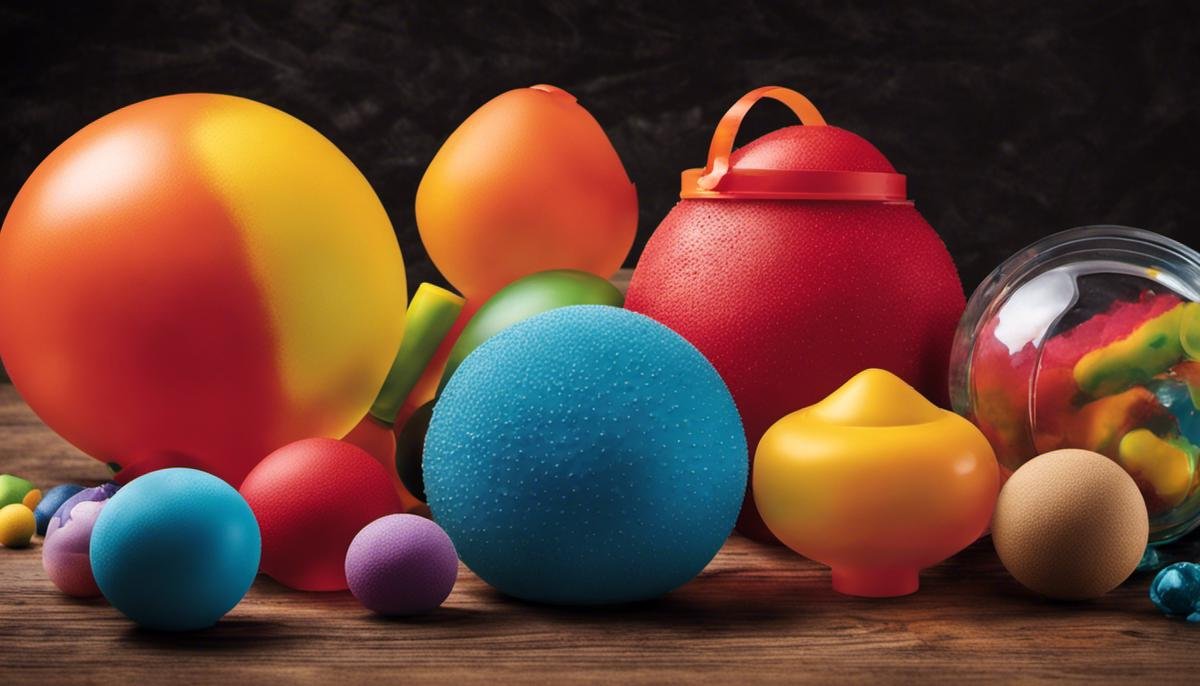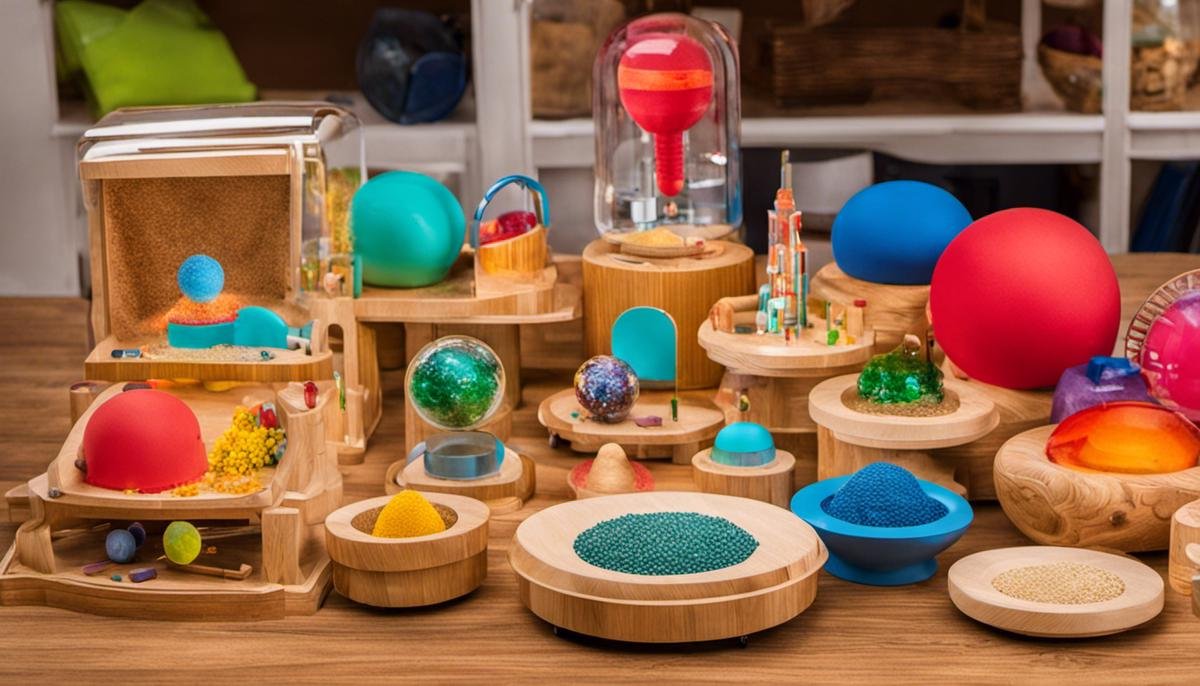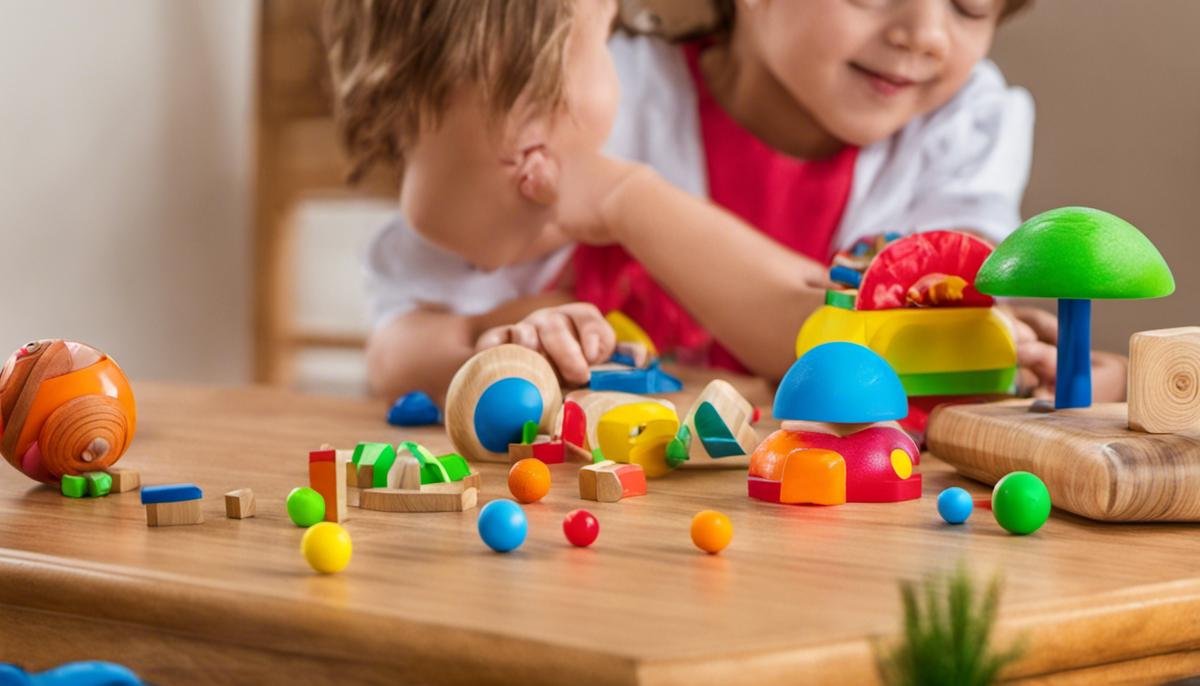
Finding effective ways to stimulate the minds of autistic children can be a challenge for teachers, therapists, and parents alike. Sensory toys, designed to engage a child’s key senses, have emerged as a popular and beneficial tool for aiding in the education and development of autistic children. These toys cater to the unique sensory needs of these children, helping them explore different stimuli and environments in a safe, controlled manner. By understanding what sensory toys are, the science behind their use, the assortment of types available, and how to select the right one, we can positively impact the cognitive development and sensory integration of children with autism, making their learning experience both more enjoyable and effective.
Understanding Sensory Toys and Their Importance
Unraveling the Magic of Sensory Toys: Why They are Essential for Autistic Children
In the vibrant tapestry of family life, parenting a child with autism can add a complex range of rich colors and patterns. As a parent or caregiver, one might frequently find themselves seeking tools to aid in the development and well-being of their child, the answer to which oftentimes lies in sensory toys, an incredible investment celebrated within the autism community.
So, what are sensory toys? Essentially, these are tools that specifically engage a child’s senses – taste, smell, touch, sight, and hearing. They come in a plethora of shapes, sizes, and textures, from squishy stress balls and vibrant play-dough to mesmerizing liquid motion bubblers. Every sensory toy aims to spark curiosity, provide a sense of calm, and help children navigate their unique sensory experiences.
Now you might wonder, what makes these sensory toys so pivotal, particularly for autistic children? The awesomeness of sensory toys comes from their dual functionality – being a source of fun and serving as a therapeutic resource.
Firstly, autistic children often experience either hypo (under-responsive) or hyper (over-responsive) sensitivity to sensory input. These toys act as a safe and controlled medium to explore and comprehend their sensory responses. A soft, squishy toy can soothe an overwhelmed child, while a bright, noise-making toy can draw out a child facing under-stimulation.
Secondly, sensory toys stimulate fine motor skills and coordination, crucial building blocks for daily life tasks. A simple act of squeezing a rubber toy or creating shapes from play-dough can enhance hand-eye coordination, focus, and precision.
Additionally, these magical toys contribute to the development of language and social skills. The shared play experiences with sensory toys grant opportunities for autistic children to interact, communicate their preferences, and express their emotions, welcoming a beautiful avenue for connection and understanding.
Furthermore, sensory toys serve as a cornerstone for cultivating resilience and adaptability. They groom the children to engage with various textures, sounds, and visuals, boosting their capability to adjust in different environments.
It’s important to remember that each child is as unique as a snowflake and so is their response to sensory toys. What works wonders for one child may not resonate with another. So, the key is perseverance and patience in discovering the toy that harmonizes perfectly with your child’s needs and preferences.
In the end, sensory toys entrust parents with a toolkit to enhance their child’s development while amplifying the joy, resilience, and understanding in their childhood journey. By weaving these sensory toys into their daily routines, caregivers can enable autistic children to thrive, communicate, and embrace their individual sensory experiences.
Therein lies the magnificence of parenting – it’s a never-ending journey of learning, understanding, and growing with our children. And tools like sensory toys are vital companions in this remarkable journey to nurture our little ones, blending bursts of fun with treasured moments of growth and discovery.

Different Types of Sensory Toys
Delving Deeper Into Sensory Toys: Catering To Various Sensory Needs
One proven way to nourish the individual needs of children – especially those who are sensory sensitive or on the autism spectrum – is through sensory toys. These tools are like superfoods rich in necessary nutrients that meet the unique sensory diet. But what kinds of sensory toys are available, and how do they cater to different sensory needs?
A Whole Spectrum of Sensory Toys
Whether a child craves tactile experience or seeks a visual stimuli, there’s likely a sensory toy tailored for them. The myriad of options falls generally into these categories: tactile, visual, auditory, vestibular, and proprioceptive toys.
Tactile Sensory Toys
Tactile toys engage a child’s sense of touch, enhancing fine motor skills. Examples include fidget spinners or cubes, stress balls, and sensory mats. These objects provide different textures and resistance, engaging the fingertips’ contours and feeding the need for touch-related sensory input.
Visual Sensory Toys
Visual sensory toys appeal to children who are visually oriented. They include liquid motion bubblers, rainbow fidgets, or even simple spinning tops. These toys provide vibrant colors and movements, capturing a child’s attention and promoting visual tracking skills.
Auditory Sensory Toys
For children who respond more to sounds, there are a slew of auditory sensory toys such as musical instruments, rattles, and sound effect machines. These can encourage auditory processing and sound differentiation.
Vestibular Sensory Toys
Vestibular toys, like swings, mini trampolines, or wobble boards provide the much-needed sense of movement and balance. These toys can aide in developing gross motor skills and spatial awareness.
Proprioceptive Sensory Toys
Last but not least, toys like weighted blankets, squeeze balls, or resistance bands cater to proprioceptive needs, helping children understand their body in relation to the space around them. These toys can provide a sense of calm, reduce anxiety, and boost focus.
Finding the Perfect Fit
With so many sensory toy options, it’s easy to feel overwhelmed. But bear in heart foremost the unique needs and preferences of your little one. Some children might enjoy getting their hands in squishy substances, while others might prefer the rhythmic cacophony of a tambourine. The beauty of sensory toys lies in their capacity to meet a range of needs and preferences.
Remember, it’s not about purchasing the newest or trendiest items, but finding the ones that would bring the most joy and benefits to your child. Sensory toys are a wonderful tool, not only in supporting sensory needs but also in individualizing the care and strengthening the bond with your young ones. As each child is wonderfully unique, use sensory toys as a bridge to their world, understanding and embracing their individual sensory needs.
Transform Play Time Into Valuable Sensory Moments
Be creative and involve sensory toys in your child’s everyday activities. Make storytime more engaging with tactile books, or add a swing in your backyard for a fun vestibular experience. Home does not just happen to be a heartwarming place; it can also be a sensory haven where your child can grow optimally – one sensory toy at a time. Enjoy crafting their sensory world with love, patience, and beautifully crafted toys that meet their needs. Your efforts truly make a difference in their journey of development.
Remember, there are no right or wrong choices in sensory toys. The best thing to do is observe, listen, and understand your child’s unique sensory needs. Then, match those needs with the corresponding toys. It’s like solving a wonderful puzzle – finding the perfect piece that fits – and the result can be immensely rewarding. Happy playing!

Choosing the Right Sensory Toy
Choosing the Right Sensory Toy for a Child’s Specific Needs
Every child is a unique little mystery. They come with their own set of quirks, preferences, and needs. This is especially true for children who are navigating life with autism. We’ve discussed quite a bit about sensory toys and their importance in promoting skill development and contributing to overall well-being. But the question remains: How do you choose the right sensory toy for your child’s specific needs?
The trick is in understanding the many different types of sensory toys available and the unique benefit each child will derive from them. You’ve likely encountered the terms tactile, visual, auditory, vestibular, and proprioceptive. Here’s a quick refresher:
-
Tactile Sensory Toys: Are those that stimulate a child’s sense of touch or skin sensitivity. Good examples include items with different textures, squishy balls, or fidget toys.
-
Visual Sensory Toys: Stimulate the sense of sight. Think loudly colored or light-up toys, kaleidoscopes, or lava lamps.
-
Auditory Sensory Toys: With sounds to stimulate the child’s sense of hearing. Musical instruments, sound-activated toys, or white noise machines are great examples.
-
Vestibular Sensory Toys: Help with a child’s sense of balance and spatial orientation. This may involve rocking or spinning toys, swings, or balance boards.
-
Proprioceptive Sensory Toys: Are designed to help a child understand body awareness and positioning. Look for toys that involve pushing, pulling, or carrying heavy objects.
Remember, choosing the right sensory toy should always hinge on a child’s specific needs and preferences. It’s essential to observe your child and learn their sensory likes and dislikes. Which senses seem heightened? Which need a little more stimulation? The answers will help pinpoint the exact kind of sensory toy your child will benefit most from.
It’s also worth repeating that sensory toys should be incorporated into everyday activities. Whether it’s during playtime, during trips to the grocery store, or while visiting a friend’s house. Providing your child with a toy that caters to their specific sensory needs can have a significant soothing and focusing effect.
Creating a sensory-rich environment at home is also vital. This doesn’t mean you need to turn your home into a toy store. Instead, providing a variety of sensory experiences through everyday objects and activities is just as beneficial. For example, baking can be a great tactile activity!
Above all else, remember that every sensory journey is unique. What works wonders for one child may not have the same effect on another. Embrace this journey and support your child’s unique sensory development without pressure or preconceived notions. Have patience and stick with it. It might take a bit of trial and error, but finding the right sensory toy can be a momentous victory in the life of a child managing autism. Happy toy hunting!

Top Recommended Sensory Toys
Ever found yourself staring at a wall of toys and puzzles, unsure of which ones will engage your little one, while also supporting their needs? Especially when it comes to children on the autism spectrum, sensory toys are an absolute must-have. But, when every toy is stamped with a marketing message insisting it’s the best, how can you weed out what actually works. Today, we’re diving headfirst into the world of sensory toys and uncovering some of the top-recommended toys for autistic children!
Why these sensory toys? Well, let’s dig in!
First on the list is “Sensory Fidget Tubes” – these colorful, engaging tubes are a hit among autistic kids. The glittery liquid inside the tubes moves at different rates, providing a calming visual stimulus that fascinates and engages children. They’re also excellent toys to support visual tracking.
Another favorite is “Kinetic Sand”. This moldable, yet crumbly, sand is truly an enigma. It provides a unique tactile experience. Kids can squish, stretch, and press it to support fine motor skills development. Plus, its texture can calm anxious minds and keep fidgety hands engaged and occupied.
Then there are “Body Socks”. These might seem like a peculiar toy at first, but they’re actually quite beneficial. When a child gets into a body sock, it provides deep pressure that can be soothing for kids experiencing sensory overload. It’s a proprioceptive activity that increases body awareness and creative expression.
“Weighted Stuffed Animals”, another wonderful sensory toy, provide soft, cuddly comfort, along with the benefits of weighted therapy. These plush companions can reduce anxiety, support emotional regulation, and aid sleep, especially in kids who might feel overwhelmed by their senses.
Don’t forget “Tangle Toys” – the ergonomic curves and edges of these toys provide an endless way of moving, making them an ideal fidget tool. They help to improve attention span, concentration, and are a great tool for stress relief, supporting kids with sensory or attention difficulties.
“Therapy Putty” encourages strength, dexterity, and fine motor skills. The putty’s texture serves as a great stress-relief tool, keeping both hands and minds busy. They come in varying textures and resistance levels, which add an extra sensory layer to the experience as the child squishes, pulls, and molds it.
Lastly, “Chewable Jewelry” has gained popularity owing to its aesthetic appeal and utility. It is a discreet way for kids who need oral stimulation to calm and focus. They come in a variety of textures and toughness levels, catering to various sensitivities and chewing intensities.
These are just a few examples from the sensory toy world, and each of these exemplary toys carries a bundle of perks to aid your little one’s growth and development. Remember, though, every child is different, just as every sensory journey is unique. What works for one might not work for another.
So, when choosing the perfect sensory toy, don’t hesitate to experiment. Look at your child’s preferences – Do they enjoy specific colors, textures, or activities? Do they prefer quiet toys, or would they engage with something that buzzes or whistles? Use these cues as a guide, and you’re sure to find something that both you and your kiddo will love!
Your dedication and love, along with these extraordinary sensory toys, can pave the way for the comprehensive growth and happiness of your child. So, dig into this fascinating world of sensory toys and let the magic unfold.

When used appropriately, sensory toys can pave a pathway to an enhanced learning experience and a more fulfilling life for autistic children. Each child is unique with specific sensory needs and personal interests that must be catered to. Hence, discerning the right toy whether, tactile, visual, or auditory, is paramount. The sensory toys available today are far more than simple diversions. They promote cognitive development, balance, coordination, and even social skills. Indeed, armed with the knowledge of their importance, understanding their types, and the right guidance on how to choose these toys, we equip ourselves with the ability to make informed decisions that aid in the evolution of each autistic child’s life journey.
Let’s remember, the perfect toy does not merely entertain, it opens up a world of possibilities through its sensory stimulation. Sensory toys are proving to be a valuable tool, providing an opportunity for every child to reach their full potential.




